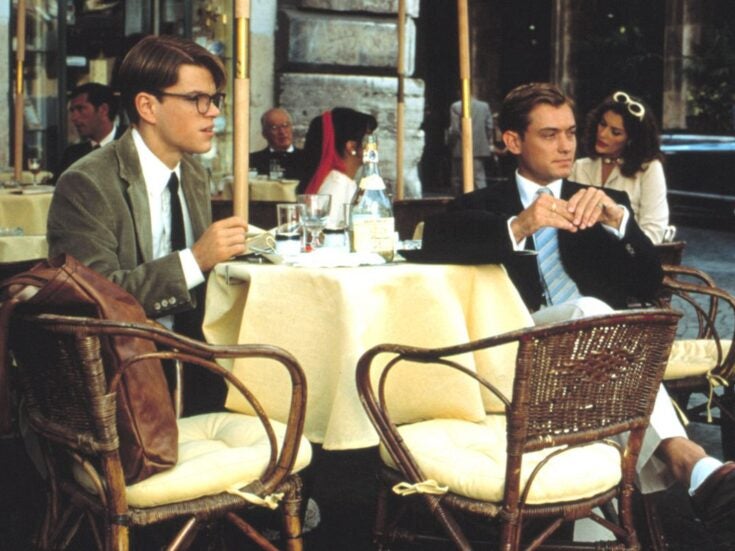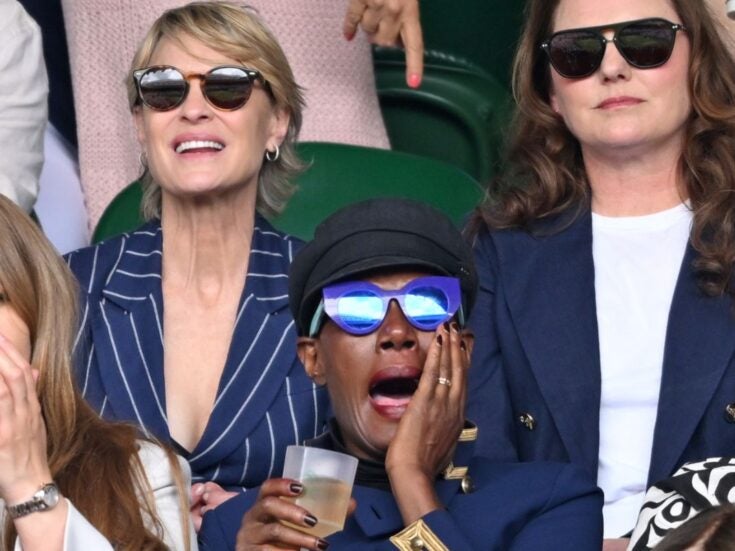The Khalili brothers, sons of the billionaire collector of Islamic art, have opened Shizaru gallery on Mount Street. They talk to Josh Spero about their leap from Iraqi ceramics to rakish Contemporary art
The Khalili brothers, sons of the billionaire collector of Islamic art, have opened Shizaru gallery on Mount Street. They talk to Josh Spero about their leap from Iraqi ceramics to rakish Contemporary art
THERE IS A room under Mount Street which looks like a prison cell crossed with a Byzantine basilica, golden glittering walls interrupted by heavy iron cell doors, keeping antiques under lock and key. A large wooden barber’s chair sits in a corner, ready with levers and knobs to reshape itself. If Sweeney Todd had been based in a better postcode, he might have plied his razors here.
But the four boys sitting on sofas in the room seem happily oblivious to the potential for terror, or at least enjoy the faint macabre suggestion of it. The three Khalili boys – Daniel, Benjamin and Raphael – are talking about their new gallery opposite the Connaught, Shizaru, whose basement we’re sitting in, with Simon, the gallery’s director. When I suggest that they were going for prison chic, they laugh.
The brothers have assembled a collection of 21st-cenutry pop art from emerging artists to sell in Shizaru, named after the do-no-evil monkey everyone forgets about. (You’d think after see, hear and say, do would be pretty obvious.) Bouke de Vries has several pieces which take porcelain busts of Chairman Mao and emphasis the horror, making thousands of tiny porcelain skulls spill out of his head, or the absurdity, with birds sitting on his shoulder and bird mess covering his shoulders. A red Gucci stiletto by Darren Lago (1999) sits on a sole and heel six feet high. Antony Micallef has a gleaming nickel-plated bronze sculpture of two childlike angels fighting, like Marc Quinn meets Jeff Koons.

The gallery itself is hardly standard for Mount Street. When I first visited to interview the boys, there was a deep blue forest downstairs, enclosing a wooden chest to display jewellery, but when I returned for last night’s opening party, there was instead a wall of golden mirrored hexagons. A narrow black corridor has more cells, one with Kelly McCallum’s stuffed flamingoes and their becrystalled legs, and two doors made to look like those of Nos 10 and 11 Downing Steet. (The loos are behind those.)
The difference is the point, says Daniel: ‘We’re three young boys, trying to think as creatively as possible. It’s a breath of fresh air, people have told us, to the street. It’s the most beautiful street, but the juxtaposition is nice.’
So which of the brothers will admit to a taste for modern gothic? Raphael jumps in first: ‘Daniel’s more into the gothic chic. The vaults idea was such a revelation: we had these spaces and we didn’t know what to do with them. The old space was a disaster, the hairdressers. What can we do with them? Dan said, “Let’s put cages on them, like tombs, with old pieces.”‘ All that is lacking is Howard Carter.
THE KHALILI BROTHERS, as most will instantly realise from their name, are not newcomers to the art world; the mere positioning of their gallery in the heart of Mayfair would tell you that anyway. Their father, Nasser Khalili, the British-Iranian billionaire property-developer and philanthropist, has a world-beating collection of Islamic art – 20,000 pieces worth (estimates vary) £1-£5 billion, and has endowed several chairs in Islamic art studies at British universities.
So how did his sons get from Iraqi ceramics to rakish Contemporary art? They acknowledge Daniel as the major collector, supporting young artists, and they say that they want to make that a big part of the gallery’s purpose, providing context and difference with antique pieces.

They have the innate discrimation of the accustomed collector. Of their father’s influence Raphael says: ‘Indirectly, subconsciously, it’s been with us from a very young age. It hasn’t had a direct effect but it’s been something we’ve been brought up with all our lives.’
It’s given them an eye, he continues: ‘Me and Dan went to a store called Couturelab, so we walked in there, it was a Japanese dragon made in the last couple of years and it was on a cigar box and it looked okay. Me and Dan went, “All right,” but we were with a friend, he was like, “That is unreal, look at that dragon.”
‘It was like £6,000 for the cigar box, and me and Dan were going, “That isn’t even that nice, you know.” Because my dad has a Japanese collection, and we’ve seen the Meiji period, which has the finest dragons made, the metalwork, the enamelwork, because we’d been brought up around Meiji we didn’t even notice it. It was embedded in us.’
The boys couldn’t help but eddy around the mainstream of modern art despite their domestic collection. ‘When we were a little bit younger,’ says Raphael, ‘we used to go round to people’s houses who had major contemporary art collections – it’s the more conceptual stuff – and [their father] would just be, “What’s that? What’s that?” – and these are major pieces! He’s so oblivious to that. He was used to being brought these miniatures and porcelains and lacquers, and he’s going round seeing smashed mirrors and lumps of god-knows-what.’
THE LUCKY POSITION exists for the brothers where their livelihoods do not depend on the success of Shizaru, but the business/pleasure division causes its own divisions. Raphael thinks that ‘most importantly we’re here to enjoy ourselves. That’s number one. We are looking to contribute up and coming artists to people. Financially, obviously it’s a business and we’re looking to make money, but more importantly to give those up and coming artists a platform.’
Benjamin sees it the other way round: ‘I see it as more of a business, then we enjoy ourselves.’
To judge by last night’s opening party, it seems like there’s no reason they won’t do both.






